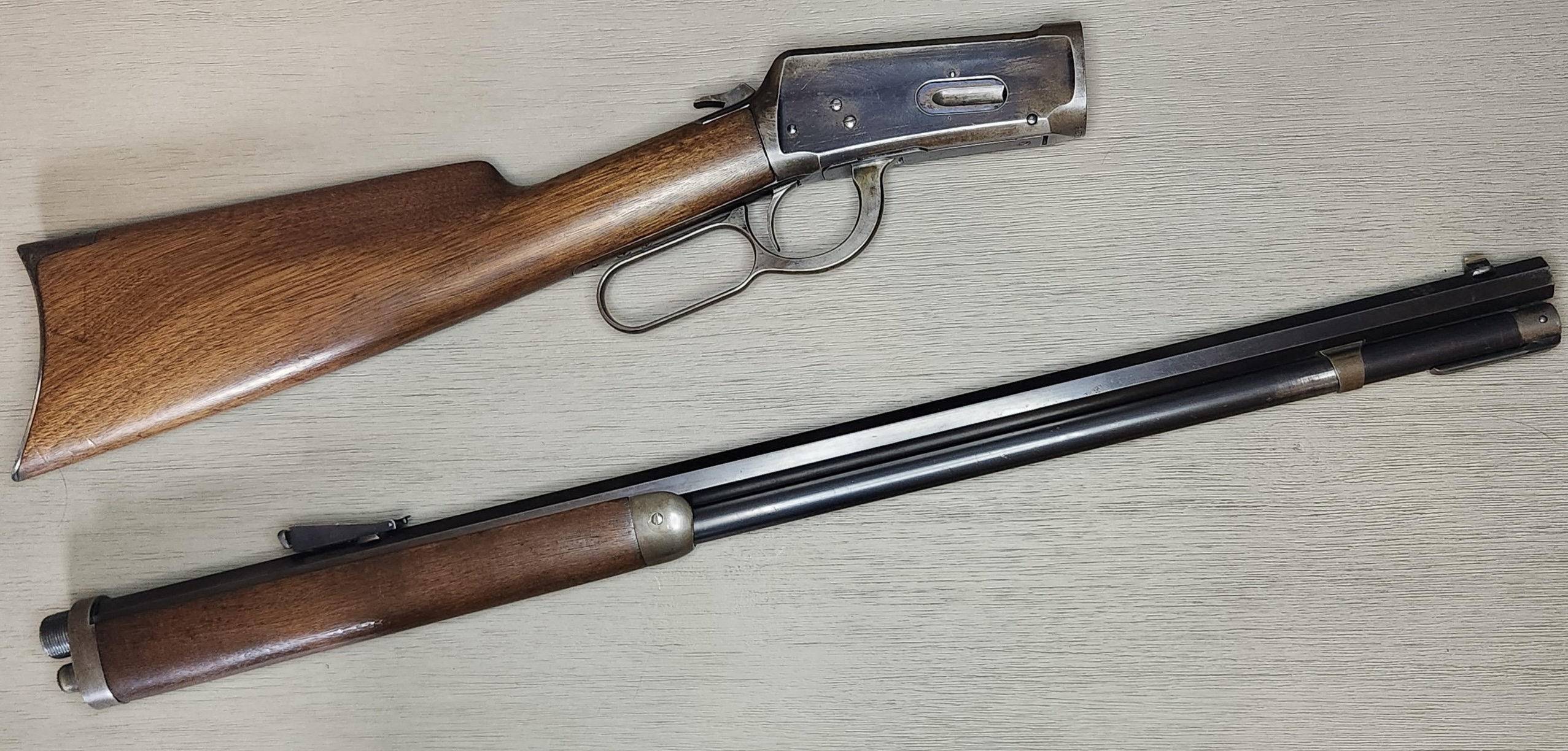I first met Mark on one of the gun forums I frequent. He had posted pictures of a quite unusual Winchester 1894, and was asking if anyone else had ever seen anything like it. Being an owner of a Winchester 94, and having a keen interest in old leverguns, I was taken aback when I learned that the gun is missing the finger lever pin access hole on the right side of the receiver!
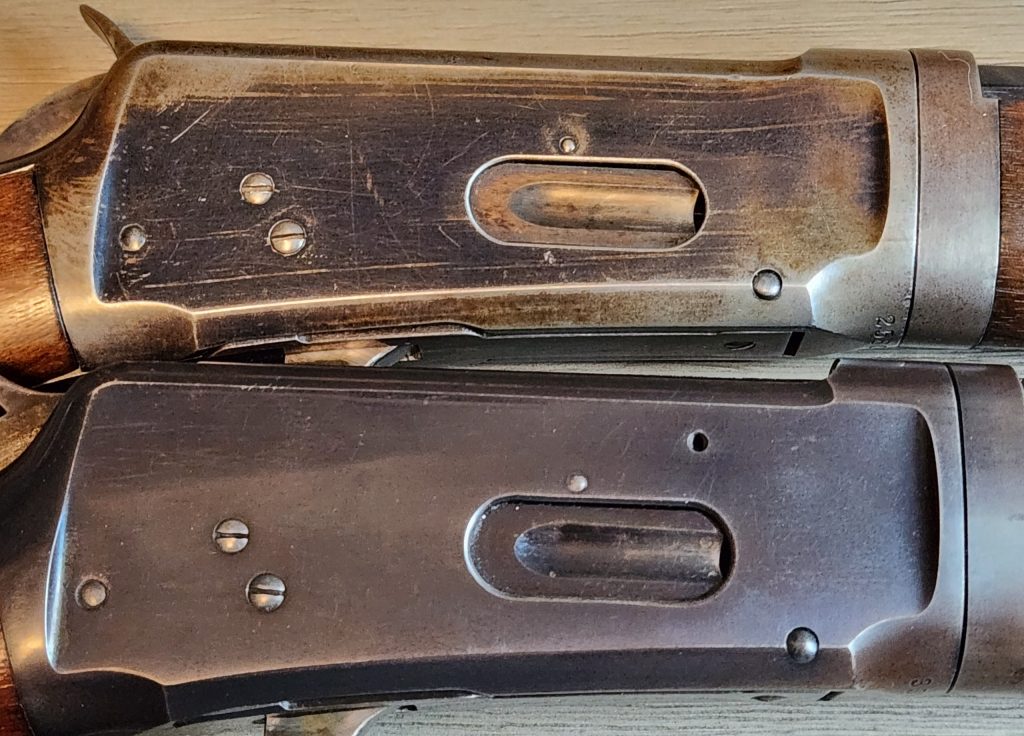
The rifle in question was made in 1910, and bears serial number 458020. It is a fine example of a Winchester model 1894 takedown rifle, retaining 50% of its original bluing on the receiver. It has a standard 24″ octagonal barrel, chambered in 32 Winchester Special caliber. The barrel retains nearly all its bluing, as does the magazine tube. It has the correct 32 Special Smokeless rear sight that accompanied rifles so chambered of the period.
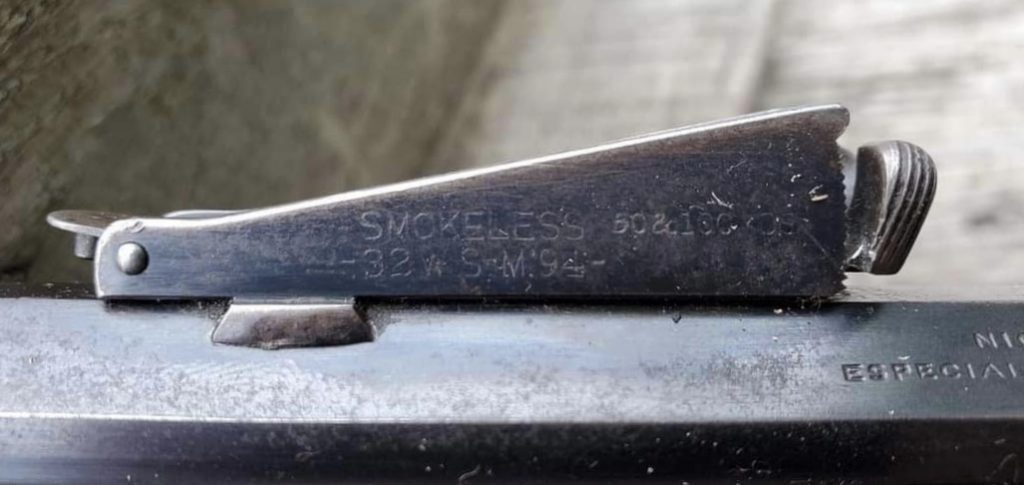
Mark tells the story of how he came in possession of this rifle, and the remedy for its unique situation so well I felt no need to add to it.
From my email conversation with Mark Minnillo (2023),
I purchased the rifle in January of 2021 over the internet from an older gentleman in Florida. He had sent several photos of the gun but I didn’t notice the missing hole. When I received the gun, I stuck it in the safe and didn’t think too much about it, as I had some other gun projects going on at the time. About 6 months had passed before I decided to take the gun out and shoot it. I have other Winchesters in 32spcl so I had plenty of ammo on hand. After loading the gun and taking aim at the target I was a bit disappointed when I heard only the click of the hammer falling. I opened the gun to find that the primer had not been struck. Having a floating firing pin I opened the action and, pointing the gun at the ground, could see that the tip of the pin was missing, as it did not protrude through the front of the bolt. Not a positive experience but not to worry, I knew a replacement firing pin could be found and I have plenty of experience in disassembling 94s.
I put the gun on the bench when I got home and removed the lever pin plug screw on the left of the receiver, the first step in disassembly of a 94. Turning the gun over, I got the correct size punch to remove the lever pin when I noticed that there was no pin removal hole in the receiver. What the?! I work on all my leverguns and had never seen a 94 without the removal hole. What to do. I called several gunsmiths from Alaska to Kentucky and inquired if anybody had any ideas about how to proceed. Most suggested drilling the correct hole but I wanted to keep the gun as is. Other ideas were banging on the left side of the receiver with a rubber mallet to see if the pin would fall out or using a magnet. I tried, but neither worked.
The idea of drilling the pin through the plug screw hole seemed like a possibility but was disregarded by gunsmiths as they figured the pin would just spin. I finally called Wild West Guns in Anchorage, Alaska and spoke to a young gunsmith there. I asked if he was familiar with the Winchester 94 and he said sort of. I thought this isn’t going to go anywhere but when I explained the situation he said perhaps he could drill the pin from the backside. So I sent him the gun and sure enough, he was able to drill and tap the pin through the plug screw hole. Then using a screw and a couple of washers, he was able to remove the pin. He replaced the firing pin and installed a plug screw in the tapped hole in the pin. He returned the rifle to me with the small screw, 2 washers, and an allen wrench to fit the plug screw in the pin. I have not had the need to disassemble the gun but should I need to do so I will now be able to.
The wood appears all original and has very few handling marks. The gun has an excellent bore with sharp rifling and no pitting. The takedown mechanism works as it should and the gun is tight when assembled. Because of the age and condition of the gun, and fact that it could not be taken apart when the firing pin broke; I am guessing that the gun spent a good part of its life on someone’s wall. I later called the guy I bought the gun from and told him about the missing hole. He said that he never noticed and that he never tried to fire the gun. When I did finally get to shoot the gun it proved to be very accurate. I cast bullets for the gun using Lyman 321297, a 184gr gas check bullet. I also had some 165gr plain base bullets I had cast using a Winchester 5th model mold. Both bullets proved to be quite accurate.
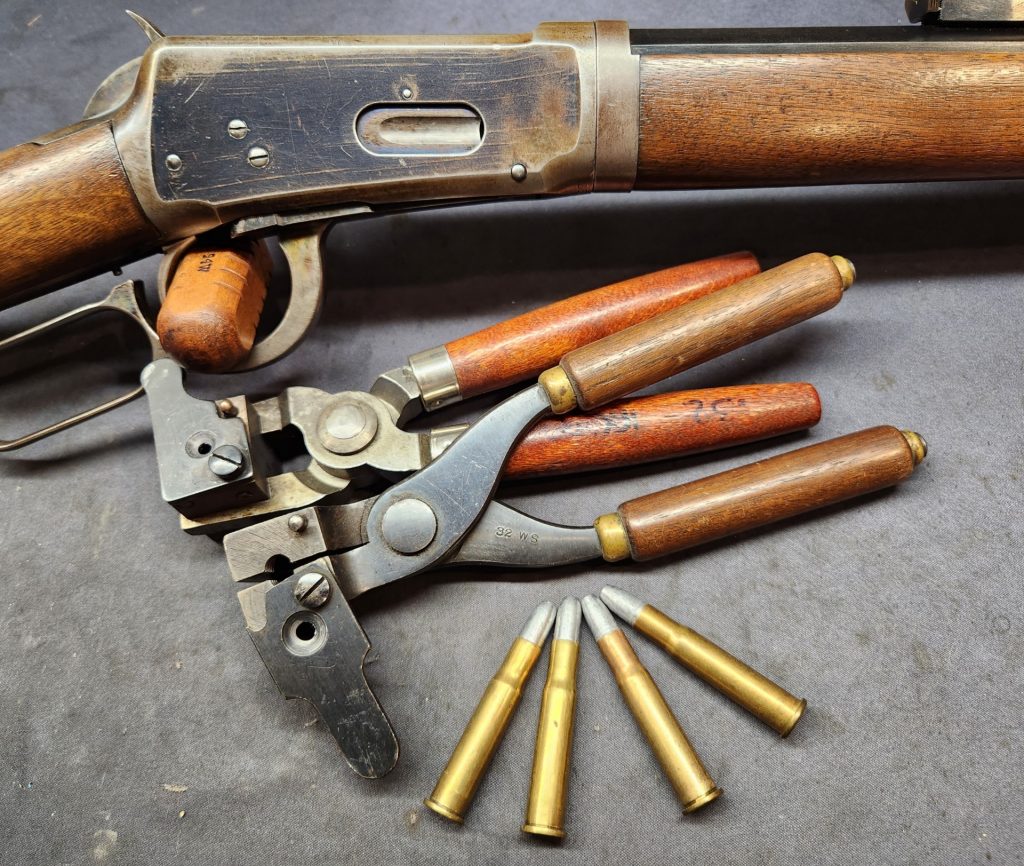
You can see, the gun is quite the mystery. After I met Mark, and learned the story of this gun it intrigued me and I began researching to see if I could find other examples. Mark has done a fair bit of research himself trying to find other examples of either the Winchester 1894, or 1892 (which has the same lever pin access hole) that are missing the hole. So far, Mark’s rifle is the only known example.
We are looking for other examples of this peculiarity in Winchester 1894 and 1892 rifles, as well as whether the rifles with preceding or following serial numbers are effected. If you have any information on a rifle that is also missing the lever pin access hole, or if you have the serial numbers immediately preceding or following 458020, please contact Mark directly at [email protected] .
Many ideas have been bounced back and forth as to why and how the gun came into this state of being. The idea that the hole simply had been welded up by an ignorant gunsmith was quickly ruled out because there is no sign of the welding or modification on the inside or out.
Another idea, and the most reasonable, is that the tooling that produced the rifle had a broken bit, and this rifle slipped past the inspectors somehow. That makes you wonder how many others slipped by too. Was it just this rifle? Or perhaps 3-4 or even a dozen? It surely is an intriguing aspect of Winchester collecting, that as of right now, is the only known example.
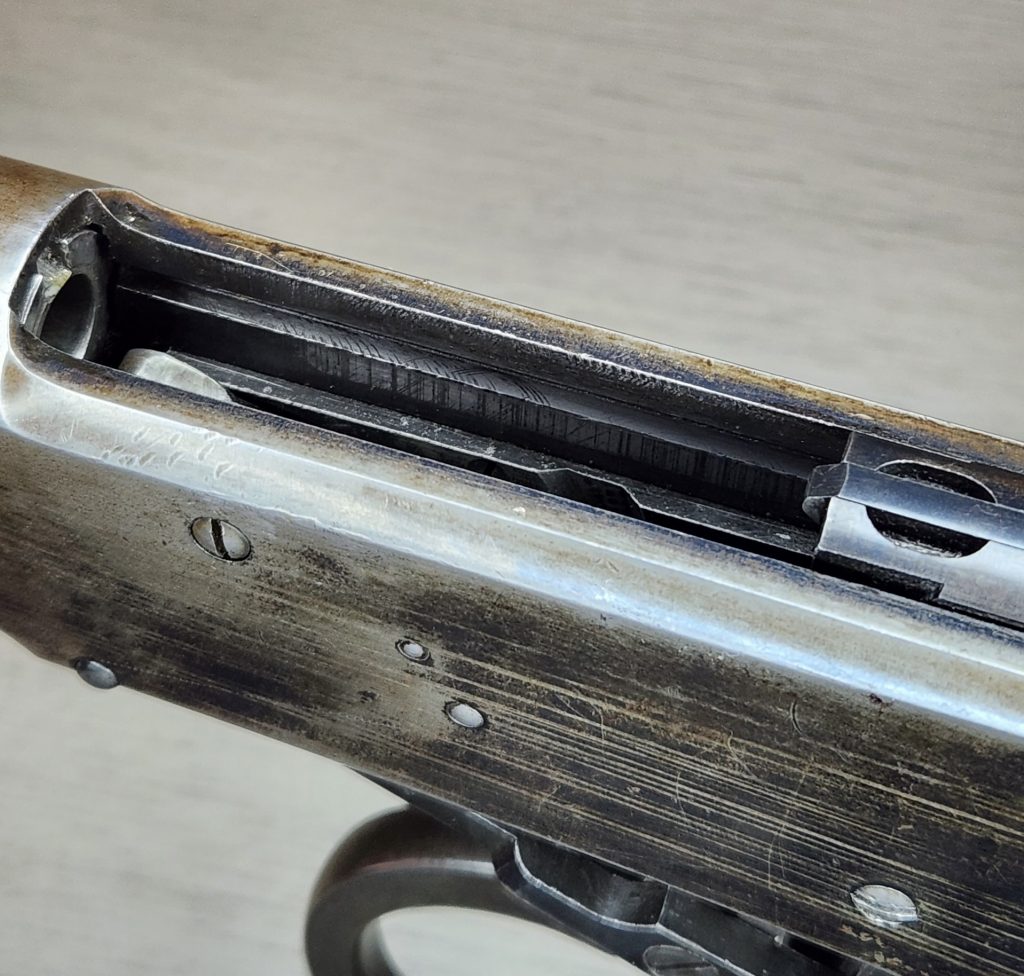
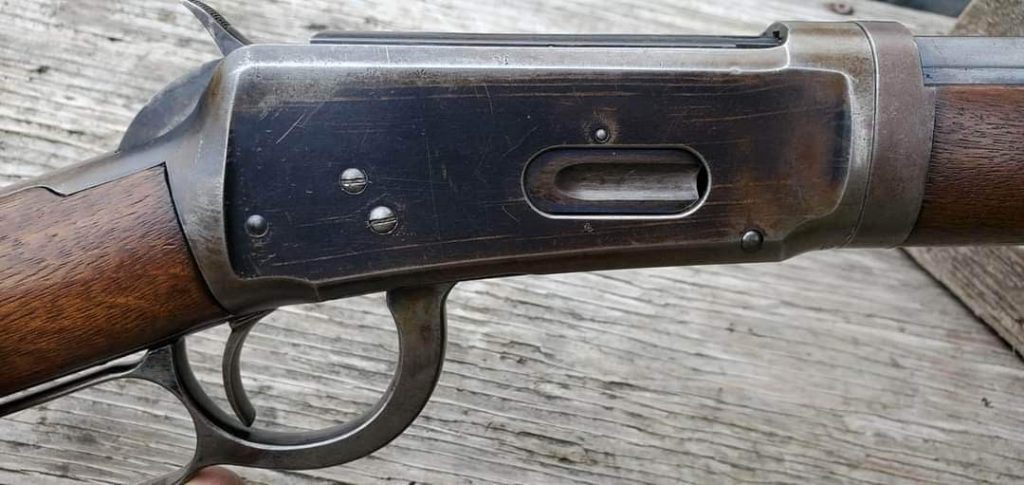
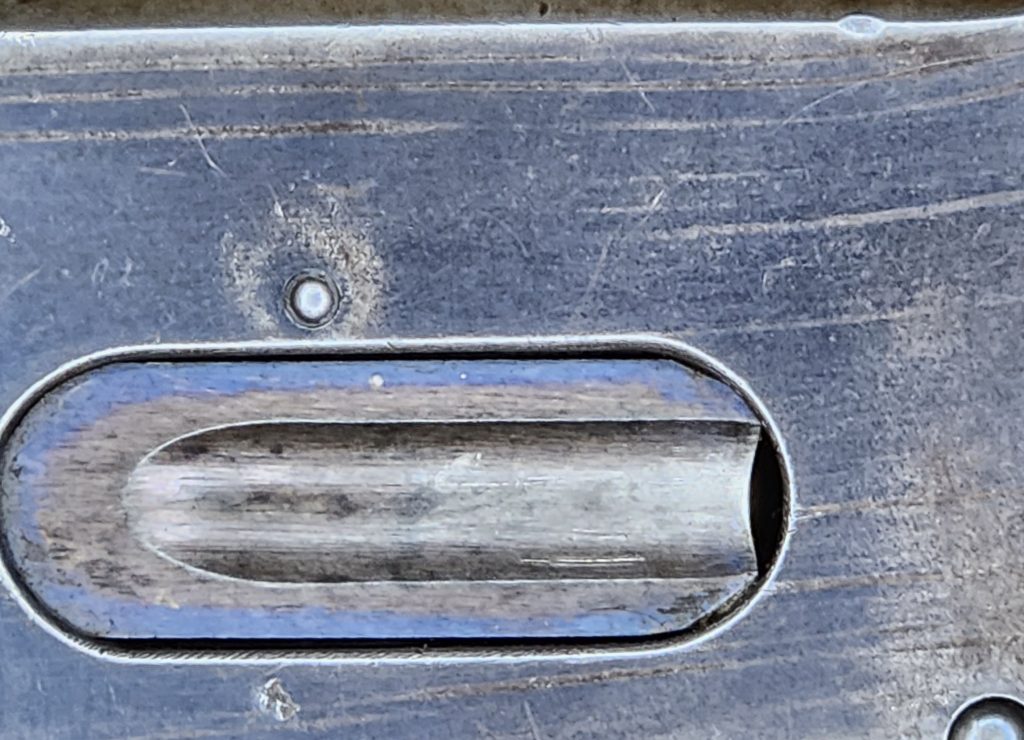

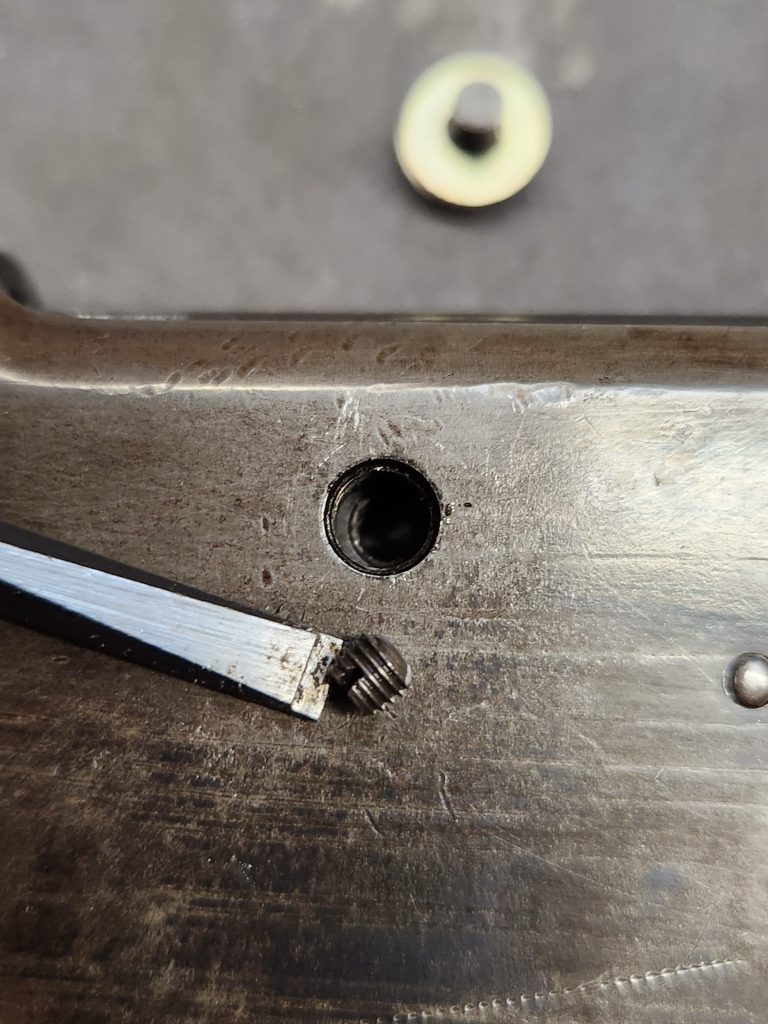

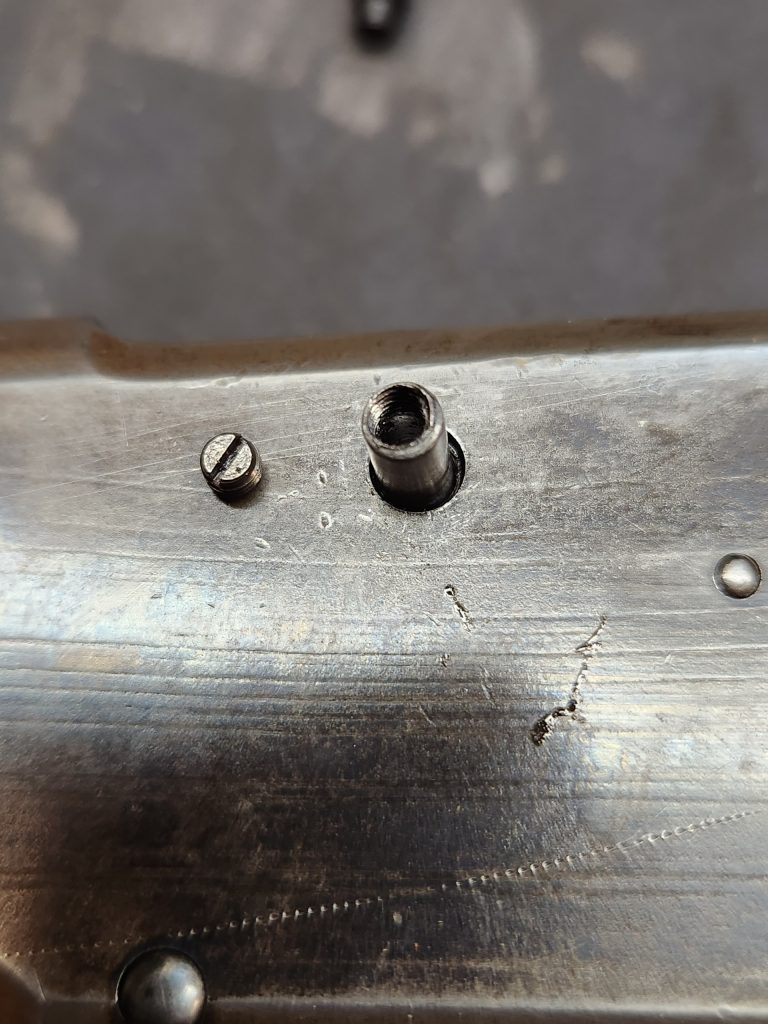
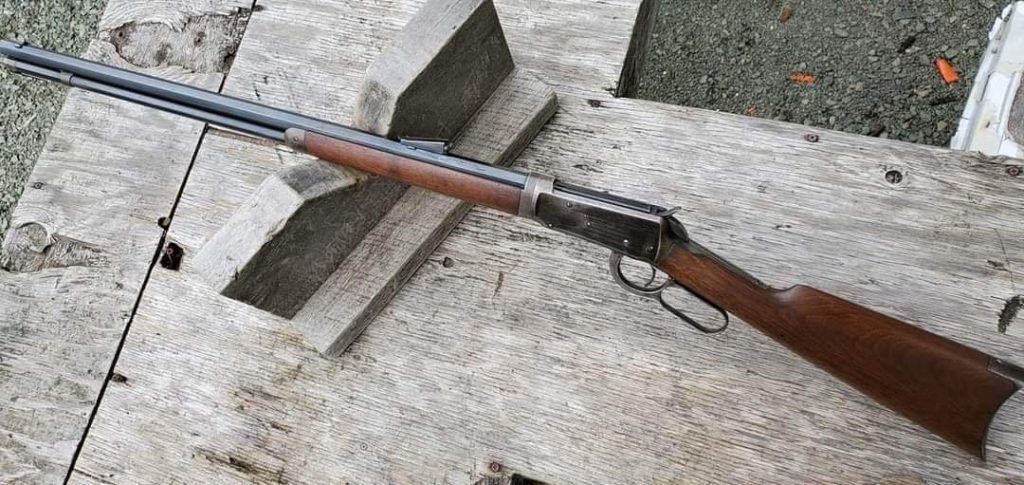
Photos provided by Mark Minnillo

